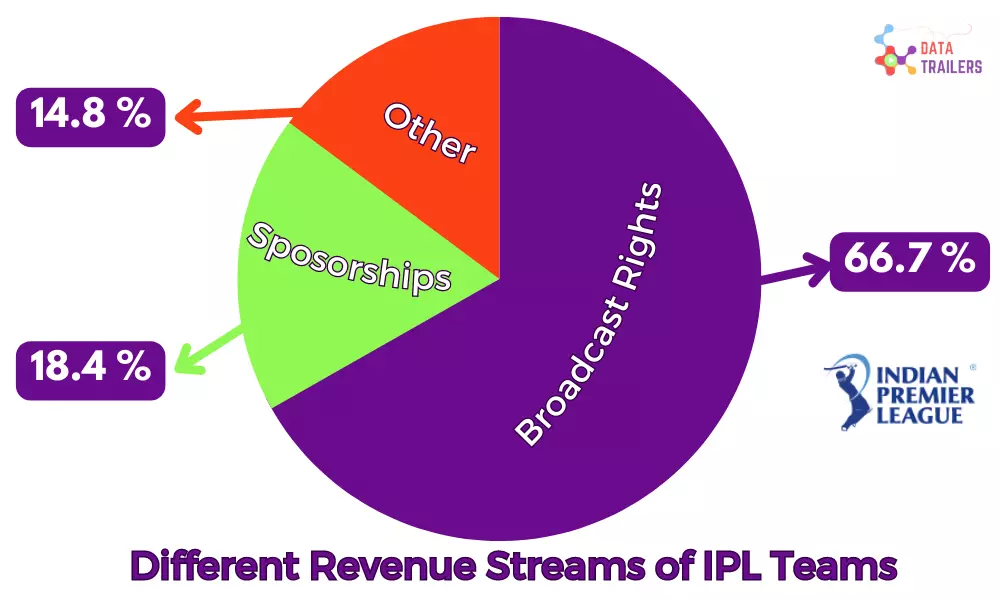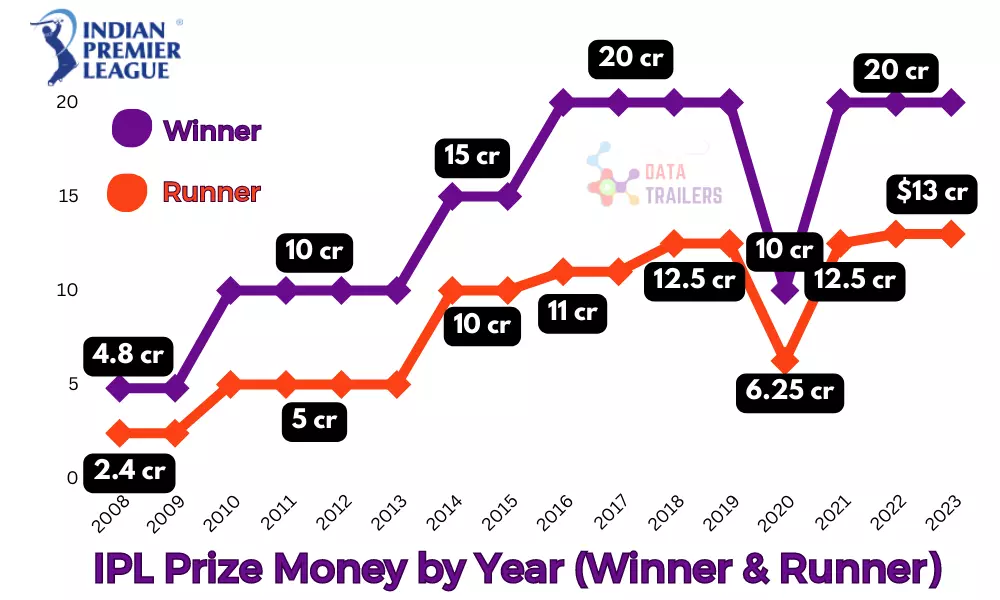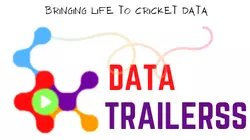IPL is the organization of money, popularity, and amusement that brings in millions of cricket fans worldwide. Among all these factors, money is the most dominant and powerful factor that is responsible for creating IPL as the biggest sports brand in World. This makes everyone curious about how IPL teams make money after spending millions of rupees each season.
IPL teams use a comprehensive strategy to make the most of their brand value and fan base. These strategies help IPL teams to be financially rich teams with a lot of money and net worth.
Read More: Richest Teams in IPL
What makes an IPL team financially rich? Are they fans or sponsors? Well, it depends on the viewership that every team gets in each season. Every team tries to have a strong player pool to increase viewership. As a result, some of the biggest companies in the World make the best offer for the team with the greatest audience.
But, the question to ponder is how IPL teams make money. Or how much money is given to each IPL team? Now, we will understand how different franchises earn money in IPL.
Basically, there are two broad sources of Revenue for each IPL team: as follows.
Central Revenue is the type of money received from BCCI either through Broadcast Rights or from central sponsors such as Vivo and Tata etc.
Local Revenue is the type of money that an IPL team earns from its efforts, such as ticket sales, merc sales, local broadcast or media rights, or local sponsorship deals.
We will now explore each form of income type for each IPL team in further detail.
Media Rights
BCCI is the organization responsible for the central media right of the IPL. Each IPL team holds an agreement to receive a particular share of Revenue decided with the BCCI. A team with a higher table ranking at the end of the season gets a greater amount of media money than a team with a lower ranking.
The selling of television rights acts as the IPL’s main income source. Networks on tv and radio compete for a chance to show the matches live on their stations. A great deal of the IPL’s Revenue comes from these TV collaborations, which tend to be very costly.
The IPL is not only the richest cricket league but also the 6th most watched sports league in the World.
Media rights are considered very beneficial for IPL teams because they cover 60 to 70 percent of total Revenue made by an IPL team. For example, BCCI’s total income in IPL 2014 stood at 999 crores rupees. Out of 999 crores, 668 crores came from media rights or broadcasters and the remaining 184 crores from sponsorship rights.
Title Sponsorship
Title sponsorship in IPL is a significant source of income for teams. This involves a company paying an enormous amount of money in order to have its brand affiliated with the league. The title sponsor’s name is displayed on the league logo and name. For instance, title sponsors have included Tata IPL, Vivo IPL, and Dream 11 IPL.
BCCI also shares some part of Title sponsorship income with IPL teams. As a result, this is part of the centralized Revenue that the BCCI shares with the IPL teams.
The most recent title sponsor of IPL 2023 is Tata, which pays 335 crores of Indian Rupees annually to BCCI. Before Tata, Vivo paid more than 400 crores each year as title sponsor income to BCCI.
Team Sponsorship
Team Sponsorship is a direct source of income for any IPL team. Each IPL team has several kinds of sponsors linked to it that help with branding and other expenditures. These sponsors locked their space on the shirts, helmets and merchandise. Each part of a player’s shirt will have some kind of advertising, which is known as a sponsor logo.
Team sponsorship is the best way for IPL teams to generate Revenue without relying on the BCCI. Moreover, it also helped teams to build a strong bond with their fans and audience. The sponsorship revenue consists of about 20 to 30 percent of the Revenue for an IPL team.
The sponsors enjoyed a lot of perks for sponsoring an IPL team. They organize meetings and events with team players and stars. Their contract is not very long terms but is for one season.
Ticket Sales
Ticket sale is another direct source of Revenue for IPL teams. By selling tickets to IPL supporters, the home team benefits the most. The income generated from ticket sales totally depends on how big is IPL stadium and the price of the ticket.
But according to the agreement, an IPL team is not allowed to take all the Revenue, but it also has to share some part of the Revenue with BCCI and sponsors. The team organizers or managers also outsource ticket revenue collection to third parties such as big three entertainment for collection of the Revenue. They provide this service in return for some type of commission. The ticket revenue covers only 10 percent of the total income of any IPL team.
Prize Money
The owners receive the prize money and decide how much to give to the team management and players. The rules mention that at least 50% of the prize money must be divided among the players. All those teams who reached in playoffs received the prize money. The below graph shows IPL Prize money of winners & runners from 2008 to 2023:
Stall Rental
Stall Rental is another source of income that IPL teams earn during the match. These stalls are rented to third parties that serve food during the match. These stall rentals cover much less of the team’s total IPL income.
FAQ’s
On average an IPL team earns around 200 to 300 crore rupees each year.
CSK, MI, RR, KKR, PBKS, SRH, RCB, and Dehli Capitals are profitable teams in IPL.
IPL money is shared between BCCI, franchises, and players.
Star Sports and JIO earn money through match advertisements in IPL.







